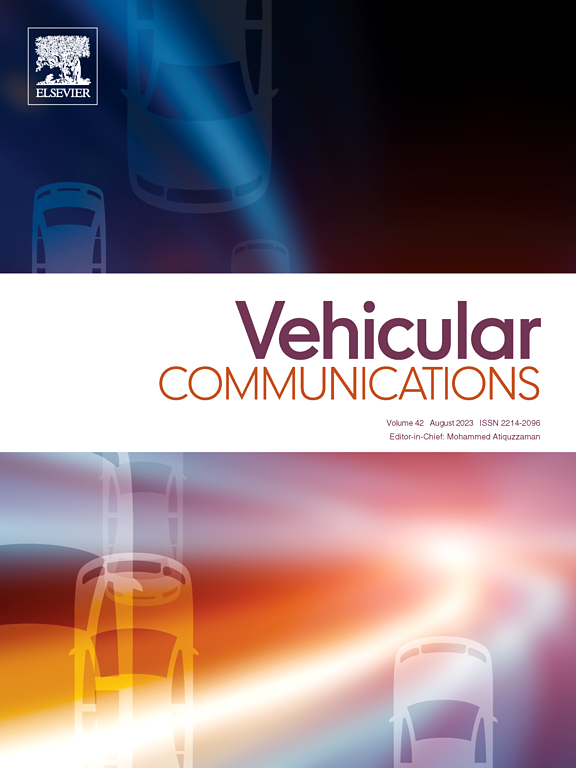Considering both energy effectiveness and flight safety in UAV trajectory planning for intelligent logistics
IF 6.5
2区 计算机科学
Q1 TELECOMMUNICATIONS
引用次数: 0
Abstract
In low-altitude economic logistics scenarios, trajectory planning for unmanned aerial vehicles (UAVs) can be treated as a typical traveling salesman problem (TSP). High-rise buildings in urban areas not only severely impact the flight safety of UAVs, but also increase their energy consumption when avoiding obstacles, thereby affecting their delivery ranges. To address these issues, this paper proposes a two-stage trajectory planning solution called ACO-DQN-TP for logistics UAVs. In the first stage, the ant colony optimization (ACO) algorithm is applied to solve the sequence for multi-target point deliveries, to obtain the optimal flight paths. The ant tabu table is reopened to allow for retracing of the movement paths in order to avoid forward search dilemmas. In the second stage, a deep Q-network (DQN) is combined with the traditional artificial potential field method to enhance the interaction between UAVs and their environment. The rewards are accumulated using two potential functions generated based on the target points and obstacles, to minimize the changes in the yaw angles and smooth the flight trajectory of the UAV. Simulation experiments were conducted on UAV trajectory planning for delivery missions with four to ten target points. The simulation results show that the average path length obtained by ACO-DQN-TP is 65% and 79% shorter than that of Greedy+DQNPF and BACO, respectively, and the sum of turning angles along the path is 56% of Greedy DQNPF and 72% of BACO on average. It indicates that the proposed ACO-DQN-TP scheme not only optimizes delivery routes compared to traditional ACOs but also effectively controls the magnitude of the changes in heading angle during flight. This ensures flight safety for the UAV through obstacle avoidance while reducing flight energy consumption. In particular, the heading angle optimization mechanism proposed in this paper has universal guiding significance for low-altitude flights in the areas of traffic and transportation using UAVs.
基于智能物流的无人机轨迹规划节能与飞行安全
在低空经济物流场景下,无人机的轨迹规划可以看作是一个典型的旅行商问题。城市地区的高层建筑不仅严重影响了无人机的飞行安全,还增加了无人机避障时的能耗,从而影响了无人机的投送距离。为了解决这些问题,本文提出了一种用于物流无人机的两阶段轨迹规划方案ACO-DQN-TP。第一阶段,采用蚁群算法求解多目标点交付序列,得到最优飞行路径;蚁禁忌表重新打开,允许运动路径的回溯,以避免前向搜索困境。第二阶段,将深度q -网络与传统的人工势场方法相结合,增强无人机与环境的交互作用。利用基于目标点和障碍物生成的两个势函数来累积奖励,以最小化偏航角的变化并使无人机的飞行轨迹平滑。针对4 ~ 10个目标点投放任务,进行了无人机弹道规划仿真实验。仿真结果表明,ACO-DQN-TP算法获得的平均路径长度比Greedy+DQNPF算法和BACO算法分别短65%和79%,路径转角之和平均为Greedy+DQNPF算法的56%和BACO算法的72%。结果表明,与传统蚁群算法相比,所提蚁群- dqn - tp方案不仅优化了投送路线,而且有效地控制了飞行过程中航向角变化的幅度。这确保了无人机的飞行安全,通过避障,同时减少飞行能量消耗。特别是本文提出的航向角优化机制对无人机在交通运输领域的低空飞行具有普遍的指导意义。
本文章由计算机程序翻译,如有差异,请以英文原文为准。
求助全文
约1分钟内获得全文
求助全文
来源期刊

Vehicular Communications
Engineering-Electrical and Electronic Engineering
CiteScore
12.70
自引率
10.40%
发文量
88
审稿时长
62 days
期刊介绍:
Vehicular communications is a growing area of communications between vehicles and including roadside communication infrastructure. Advances in wireless communications are making possible sharing of information through real time communications between vehicles and infrastructure. This has led to applications to increase safety of vehicles and communication between passengers and the Internet. Standardization efforts on vehicular communication are also underway to make vehicular transportation safer, greener and easier.
The aim of the journal is to publish high quality peer–reviewed papers in the area of vehicular communications. The scope encompasses all types of communications involving vehicles, including vehicle–to–vehicle and vehicle–to–infrastructure. The scope includes (but not limited to) the following topics related to vehicular communications:
Vehicle to vehicle and vehicle to infrastructure communications
Channel modelling, modulating and coding
Congestion Control and scalability issues
Protocol design, testing and verification
Routing in vehicular networks
Security issues and countermeasures
Deployment and field testing
Reducing energy consumption and enhancing safety of vehicles
Wireless in–car networks
Data collection and dissemination methods
Mobility and handover issues
Safety and driver assistance applications
UAV
Underwater communications
Autonomous cooperative driving
Social networks
Internet of vehicles
Standardization of protocols.
 求助内容:
求助内容: 应助结果提醒方式:
应助结果提醒方式:


